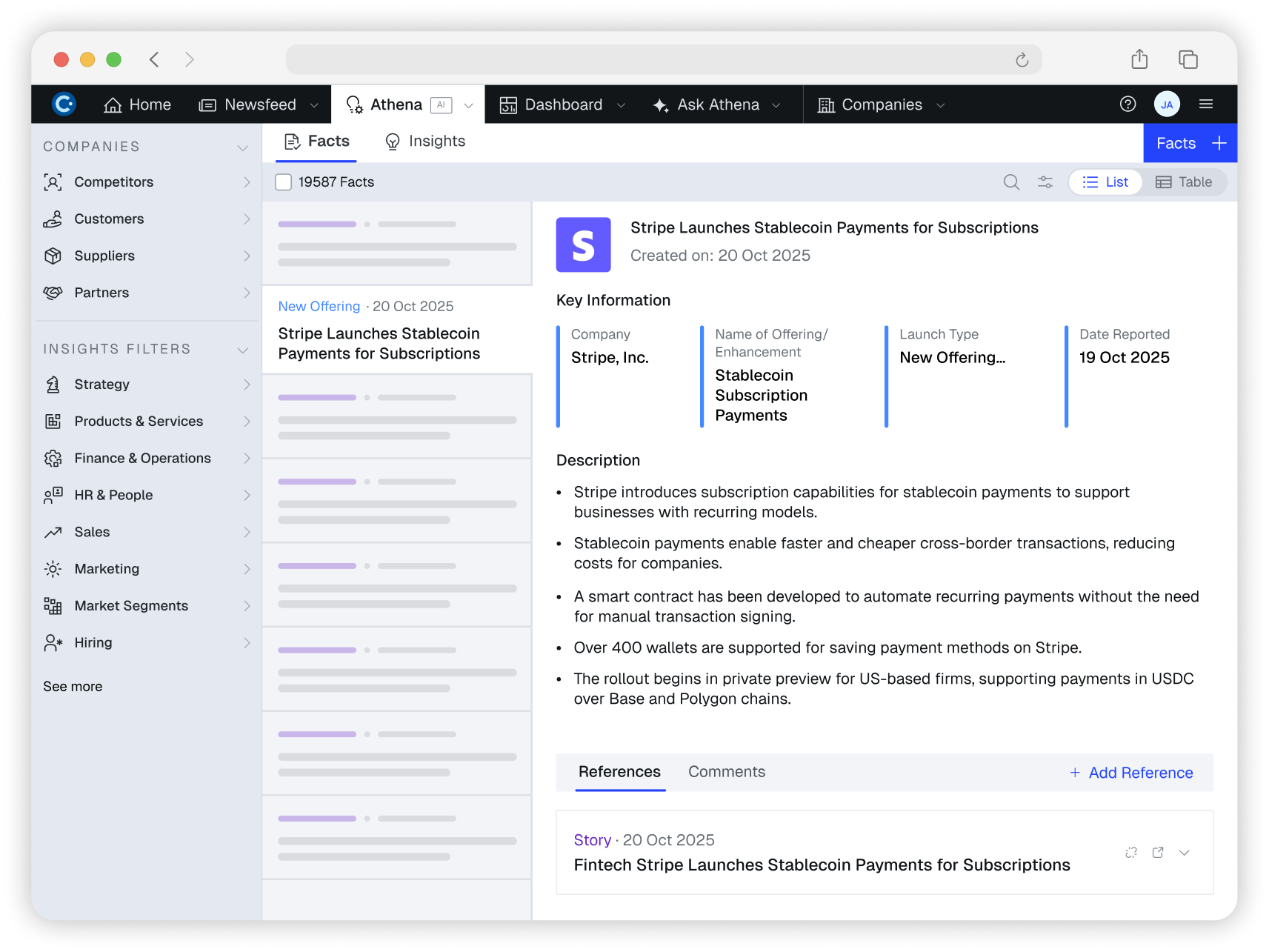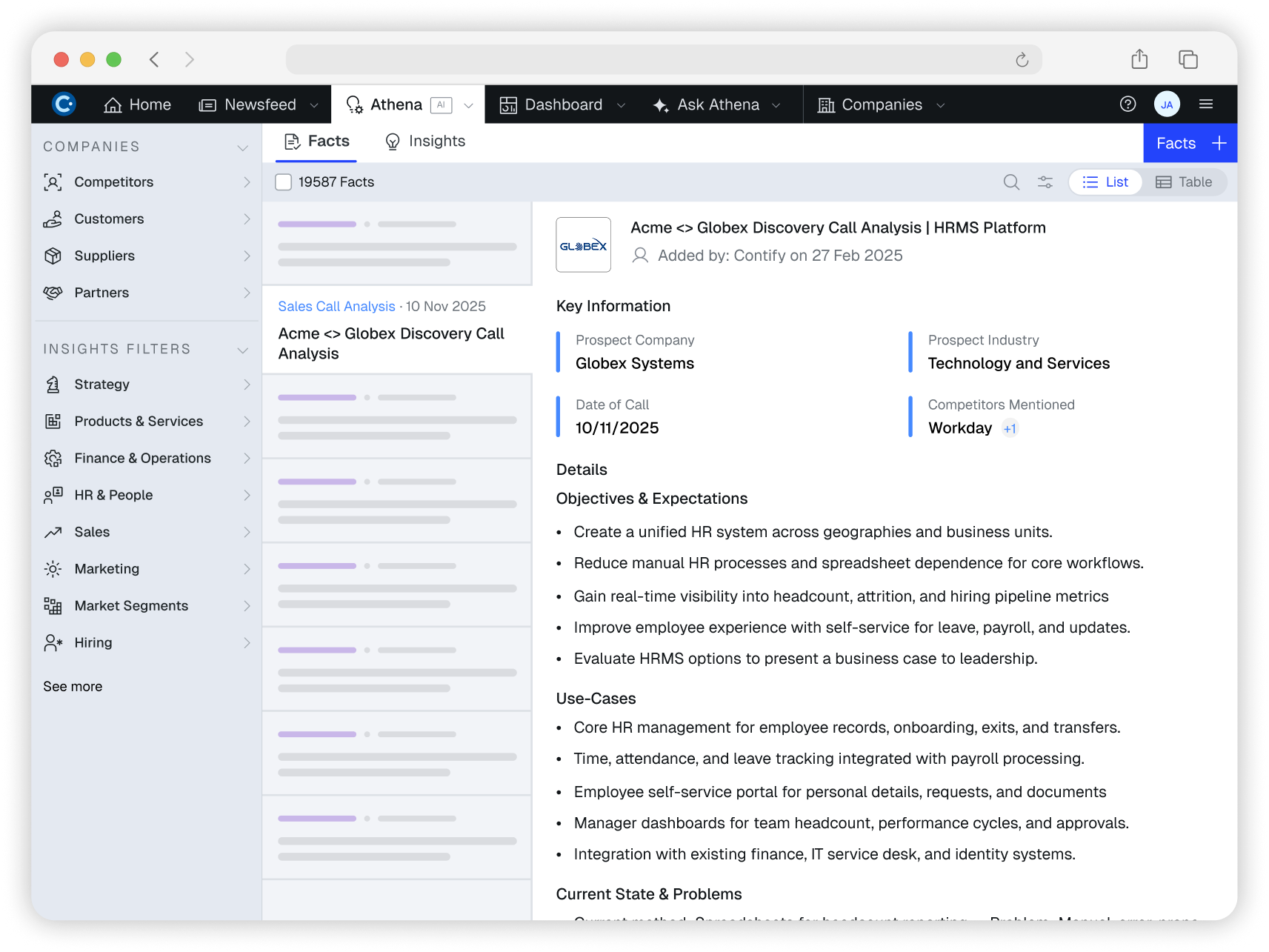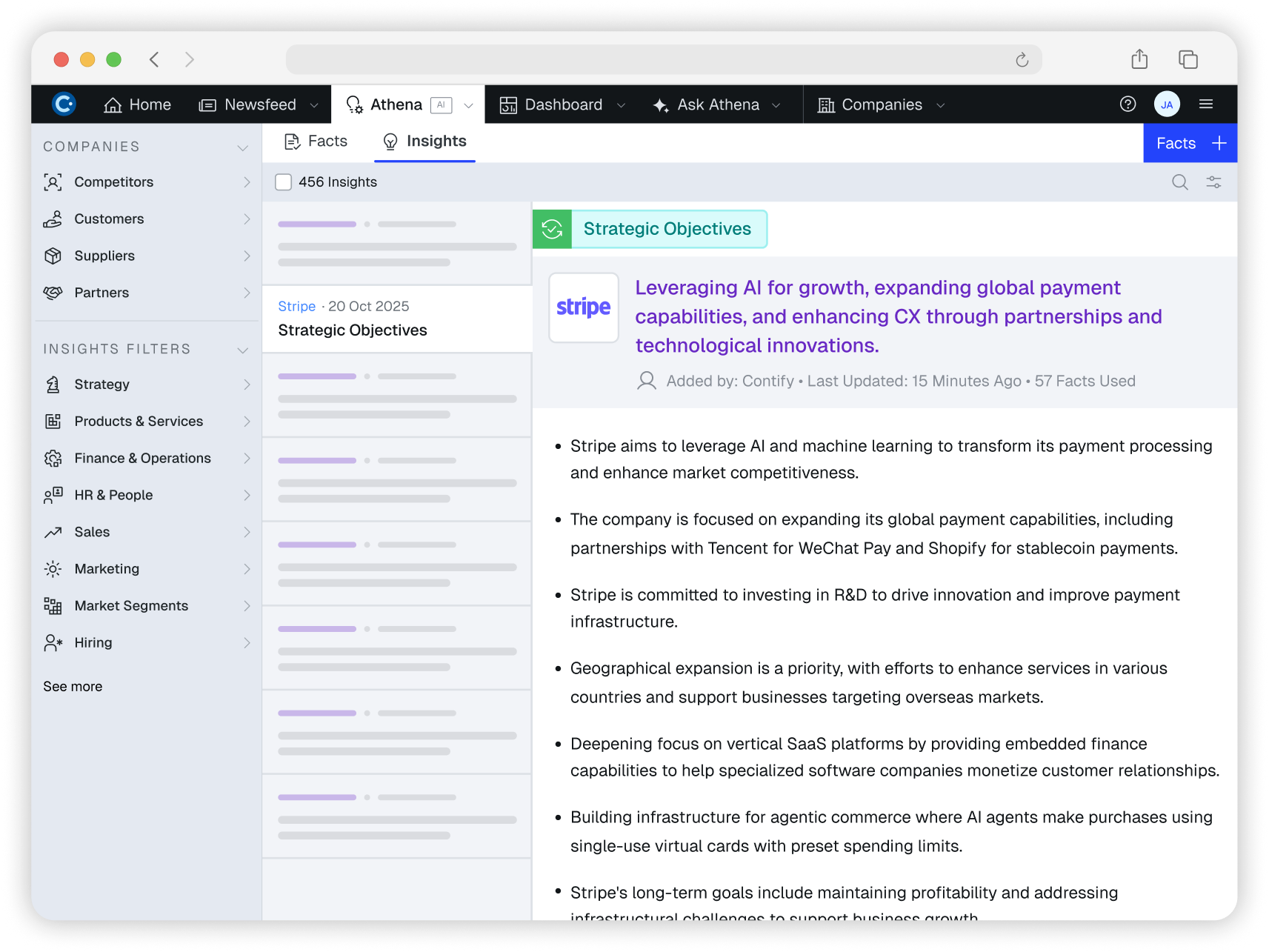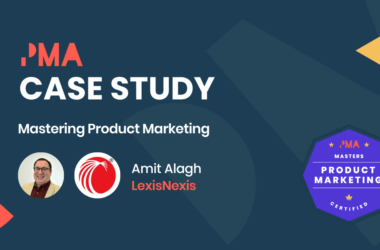Ever since general-purpose AI tools like ChatGPT and Gemini arrived, Competitive Intelligence (CI) was expected to become faster and easier for product marketing teams. Yet for most PMMs, just as much time still goes into the heavy lifting as before.
The thing that’s changed is what you’ve to lift. Instead of finding information, you now have to manually verify information before analyzing and sharing it with stakeholders.
General-purpose AI tools do speed up parts of the CI workflow. They’re flexible, provide quick answers, and work great for repurposing content. But those benefits come with limitations. They’re prone to hallucinations, generate responses from unverified web content, and even fabricate false online sources.
This poses a serious risk to intelligence reliability, especially when high-stakes decisions or field enablement are on the line.
That’s where Contify Athena AI comes in. It’s purpose-built for fast and accurate competitive intelligence automation.
What makes Athena AI different for competitive intelligence
Athena is Contify’s proprietary agentic AI insights engine, designed to eliminate manual research and synthesis with enterprise-grade reliability.
Unlike general-purpose AI tools, which are unfit for enterprise use without heavy human oversight, Athena is built on a foundation of data integrity, verified business-grade sources, and strict AI guardrails, coupled with enterprise knowledge graphs that deliver trusted outputs.
Athena Agents provide 4 interconnected plays that transform your CI workflows:
Play 1: Organizing competitive intelligence content into structured, consumable datasets
When you’re monitoring multiple competitors and a broader market landscape, extracting and organizing information into spreadsheets or presentation decks is both time-consuming and error-prone.
Athena removes this bottleneck by automatically capturing key data points from both external and internal intelligence sources for strategic business events, such as management changes, new launches, partnerships, customer wins, reviews, and more – and turns them into structured datasets as fact cards and exportable tables.
For example, when a competitor announces a new offering, it extracts attributes such as offering name, launch type, associated product or service, and key highlights.

Similarly, from sales call transcripts, it extracts mentioned competitors, objectives and expectations, buyer problems, current solutions, etc.

You can also define your own fact templates to auto-process data based on your CI requirements.
With access to these always-updated structured datasets at scale, you can build enablement assets with quick turnaround or conduct both qualitative and quantitative analysis without starting from scratch.
Play 2: Auto-generating strategic insights continuously
By connecting multiple facts contextually, Athena continuously generates high-quality insights without waiting for you to prompt on your market and competitive landscape.
For example, it surfaces auto-updating insights on your competitors, including their strategic objectives, key offerings and features, customer segments, market positioning, and more.

Alongside these, you can also create custom insight templates with tailored prompts for your use cases.
These insights allow you to focus solely on strategic interpretation rather than getting bogged down in manually synthesizing data. You can add your own inputs, share them with stakeholders, or use them in battlecards and intelligence dashboards.
Play 3: Keeping battlecards and intelligence dashboards always current
Battlecards, competitive decks, and intelligence reports are where your CI work actually gets actioned from. But they quickly outdate as new developments occur.
Athena eliminates the problem by powering always-current battlecards and dashboards. The AI-enriched intelligence datasets and automated insights generated in Contify flow directly into your battlecards and dashboards, keeping them always up-to-date.
Instead of manually editing slides or copying snippets into PDFs, you configure dashboards once and let the underlying datasets automatically refresh them.
For example, in a marketing overview dashboard, when a competitor shifts their messaging, reveals event highlights, publishes new content, or announces a new event, these updates are reflected immediately in your dashboard widgets.

That means you don’t have to spend time on gathering data and reformatting the same assets. Instead, focus on enabling GTM teams with sharper narratives, better talk tracks, and confident strategic guidance.
Play 4: Providing instant answers to intelligence queries
No matter how good your enablement assets are, there will be times when your stakeholders will still ping you with ad-hoc and urgent queries.
Often, the answers would already exist in your platform data, CI assets, and dashboards. But finding them and packaging them fast enough without dropping what you’re already working on is challenging.
Ask Athena, Contify’s conversational AI assistant, solves this. Your stakeholders can directly ask questions in natural language and get instant, context-aware answers drawn from both external market intelligence and your company’s internal competitive data.
Instead of routing every “quick question” through you, stakeholders can get trusted answers and jump straight to action.
Bringing it all together
With Athena AI, you break free from grunt work and focus on strategic work where your expertise matters most.
If you’re ready to make competitive intelligence an always-on advantage for your organization, Contify and Athena AI agents give you the foundation to do it.
To learn more about Athena AI or try it out, visit here.



